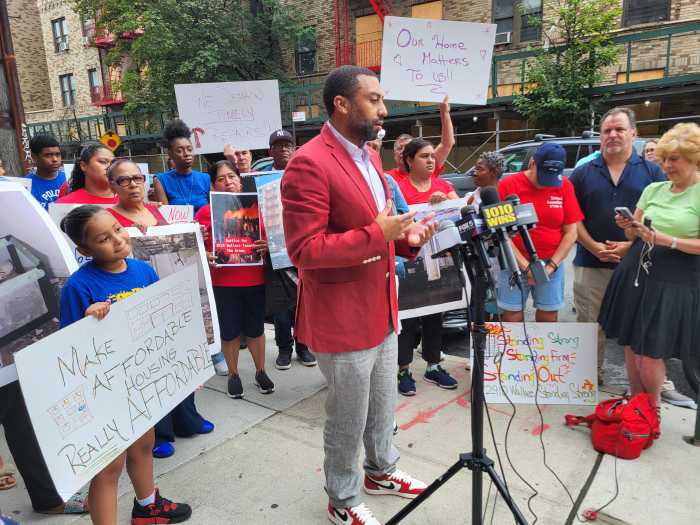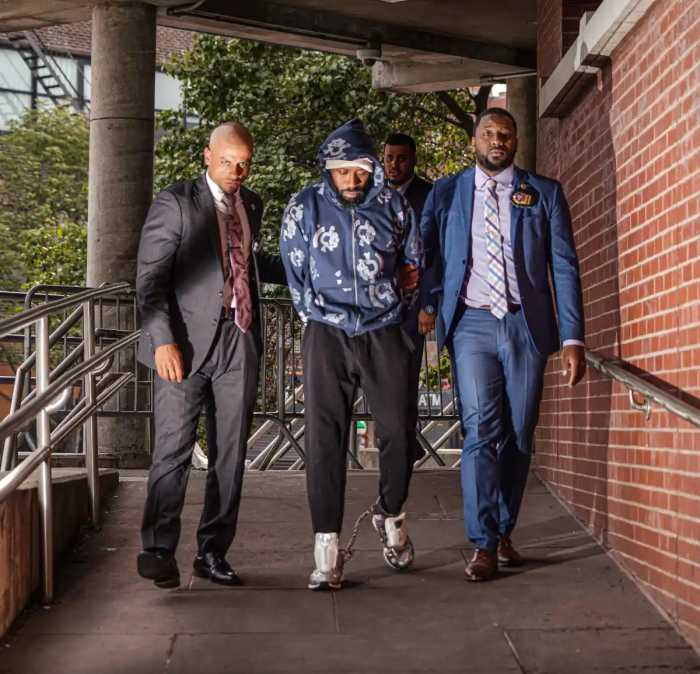Last Sunday’s massive Metro-North train derailment in the Bronx put local hospitals to the test.
The news was tough – four people dead and 63 injured from a 5:54 a.m. train from Poughkeepsie.
The eight-car passenger train bound for Grand Central Terminal rolled to its side at 7:22 a.m. as it rounded a notoriously curvy track near the Spuyten Duyvil station.
EMS techs at the crash site accessed the injured, triaged them and quickly called the Bronx’s trauma centers – Jacobi Medical Center, Montefiore Medical Center and St. Barnabas Hospital – standard protocol for major catastrophes.
“We don’t want to inundate one hospital,” said FDNY spokesman Frank Dwyer, adding the first rule is to remove “the most seriously injured people off site as soon as possible and to a hospital.”
EMS pegged 11 victims as “red tags,” considered high-priority, rushing them to Manhattan’s Columbia-Presbyterian, the closest trauma center by the crash site. The rest were taken to the Bronx centers.
St. Barnabas Hospital
Dr. Ernest Patti was off that Sunday at St. Barnabas Hospital – until he and other staffers received a page of a mass casualty incident.
Twelve crash victims were headed to the intensive care unit, with blunt trauma injuries from a broken jaw to a fractured spine.
“Your heart starts feeling heavy because you’re thinking of the people’s families as you’re taking care of them,” said Dr. Patti, the center’s senior attending physician for emergency services. ”
Luckily, extra staffers were on hand thanks to a shift change happening midway. Nighttime staff worked with their daytime counterparts as they triaged the victims, rushing many to surgery.
“You gotta keep cool, you gotta keep the ship going straight ahead and you gotta make everybody else feeling calm and confident,” said Dr. Patti.
“You run on adrenaline,” said Dr. Patti. “And when you finally leave, you crash.”
Montefiore Medical Center
The ER staff at Montefiore Medical Center in Norwood got the first call shortly after 8 a.m.
They were shocked but had already been primed to take on an event such as a train crash with constant drills.
“When we were initally being told there were 70 to 75 casualties, that was a number we were prepared to deal with immediately,” recalled Peter Semczuk, Montefiore’s VP of Clinical Affairs. “Had they brought every single patient to us we could’ve take care of all of them.”
Thankfully, Montefiore’s medical treated only four victims, suffering from “back aches, neck pain, post-concussion kind of syndrome…people complaining about headaches,” as Semzcuk recalled.
“We prepare inevitably for the worst case and hopefully we end up with something better than the worst case, ” said Semczuk, “and that’s clearly what happened here.”
Jacobi Medical Center
Janice Halloran didn’t need the call from EMS to tell her about the crash. She already saw the breaking news report on tv.
At home on standby, Jacobi Medical Center’s senior associate director of emergency medicine and admitting rushed out of her Morris Park home shortly before 8 a.m.
She rallied her ER team for standard operating procedure for emergencies – “every day for us is a dress rehearsal.”
Thirteen patients were brought to the hospital, with injuries that ranged from chest to head pain.
But Halloran emphasized the emotional toll on the victims, who were “really shaken up,” a reason why staffers set up a Family Crisis Center.
“Once we’re done treating them, we would re-unite them with their family in the family center, give them a little time together,” said Halloran.
By the time it was all over, Halloran’s ten-hour marathon was over. She refused to “abandon ship.”















